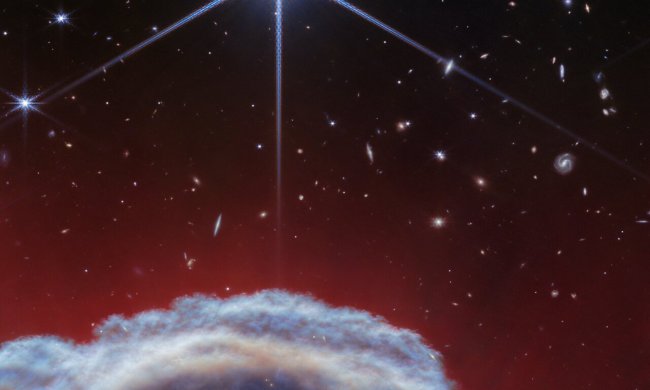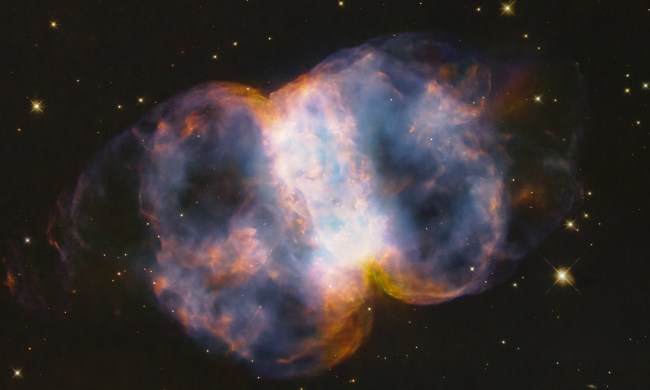While we wait to hear updates about the Hubble Space Telescope, which is currently in safe mode and not collecting science data while a problem is investigated, we can still enjoy the beautiful images captured by the telescope in the past. One such image, recently released by NASA, shows a striking blue planetary nebula located in the constellation of Eridanus.
The image shows the planetary nebula NGC 1535, also known as Cleopatra’s Eye. Somewhat confusingly, planetary nebulae have nothing to do with planets — they are in fact shells of hot gas which is given off by red giant stars in the late stages of their lives. When they were first observed, however, early astronomers thought that these nebulae were planet-like because of their spherical shapes, hence their name.

This particular nebula is similar to a more famous planetary nebula, the Lion Nebula or NGC 2392, as both have an unusual double shell. There are two layers of gas within each of these nebulae, forming both an inner shell and an outer shell. In the case of Cleopatra’s Eye, the image shows both an older outer region of gas and a brighter inner center.
As well as being intriguing to look at, studying this nebula could help astronomers learn more about the relationship between stars. Current research suggests that the star at the heart of this nebula could be one of a pair, forming half of a binary star system that consists of two stars orbiting each other.
“Hubble observed this nebula as part of a study of over 100 planetary nebulae with nearby stars,” the Hubble scientists write. “The proximity of the stars indicated a possible gravitational connection between the nearby stars and the central stars of the nebulae. Observations of the distance between NGC 1535’s central star and its possible companion suggest that Cleopatra’s Eye is indeed part of a gravitationally bound binary star system.”



